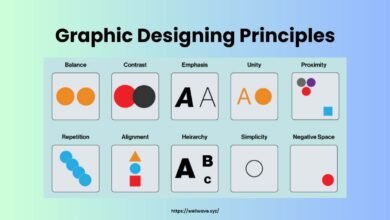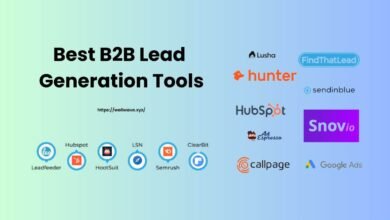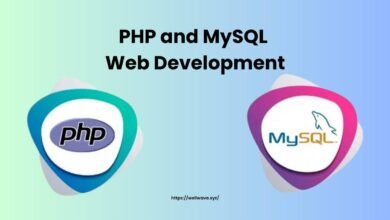SEO and Search Engine Marketing 2024: Exclusive Guide for New
SEO and Search Engine Marketing
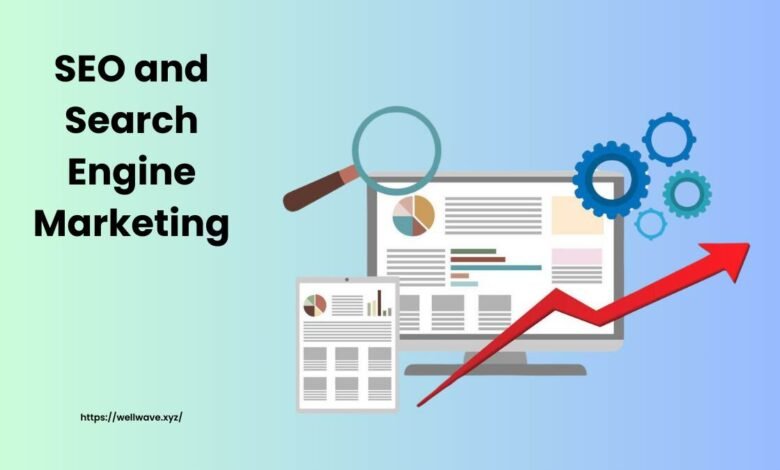
Table of Contents
SEO and Search Engine Marketing, as these days, competition in the modern world demands businesses remain relevant online. Among such tactics are two that head the digital front lines: SEO, Search Engine Optimization, and SEM, Search Engine Marketing. Often used interchangeably, both differ in their approach and how they are implemented. Let’s examine what these are and differences in mastering techniques.
What is SEO?
Whenever we say Define Search Engine Optimization, it refers to the optimization of your website to get better organic visibility on the search engine results pages, which is abbreviated as SERPs. This includes a number of Search Engine Optimization Techniques that make your website appealing to the search engines like Google.
Meaning of SEO Search Engine Optimization
SEO is the process of making website content, structure, and technical aspects align with search engine standards. This way, your site will be more accessible to users searching for relevant topics.
Types of SEO Strategies
- On-Page SEO: Content, keyword, and meta tag optimization.
- Off-Page SEO: Creating more backlinks and upgrading domain authority.
- Technical SEO: Improving site speed, mobile-friendliness, and navigation.
What is Search Engine Marketing (SEM)?
SEM is a blend of paid and organic ways that increases search engine visibility. Typically, paid SEM is comprised of PPC- pay per click advertisements. In this the cost for an advertiser lies each time when his advertisements hit the SERPs with proper keywords.
Key Aspects of SEM
- Pay Advertisement Campaign: It involves both Google Ads and Bing Ads.
- Keyword targeting: High intent keyword targeting with an objective of generating high volume of traffic.
- Performance analysis: Measures of ROI, click through rate, conversions, etc.
SEO vs. Search Engine Marketing: Important Differences
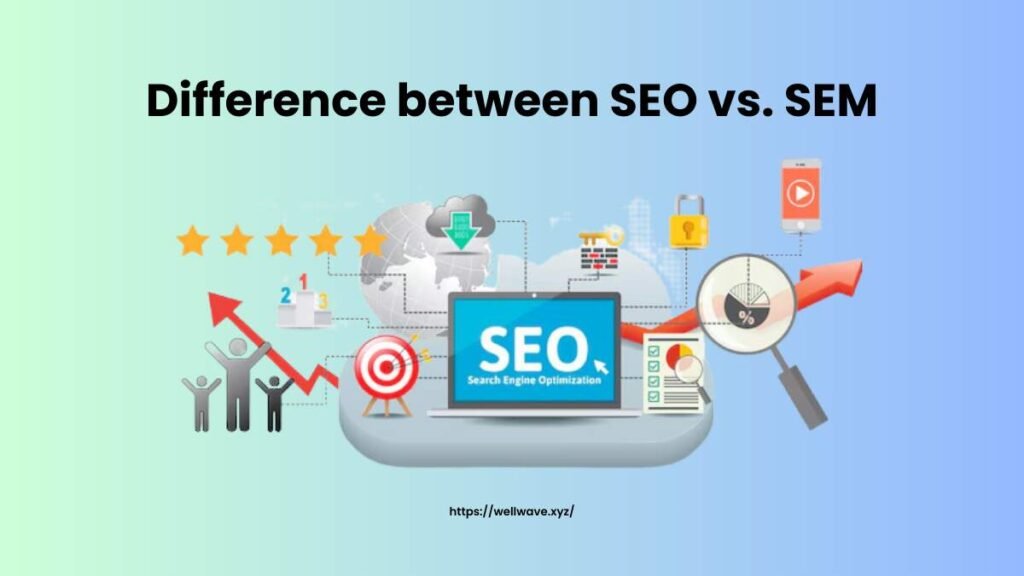
While both SEO and SEM share the same aim, which is to boost visibility online, their approaches and results are very different.
| Aspect | SEO | SEM |
| Cost | Free (organic efforts) | Paid (advertising costs) |
| Time to Results | Slow; takes months to build rankings | Fast; immediate visibility |
| Sustainability | Long-term results | Results cease when ads stop |
| Focus | Organic search | Both paid and organic search |
| Control | Limited to algorithm changes | Complete control over ads |
Why SEO and SEM Matter for Businesses
SEO Advantages
- Long-term growth in traffic.
- Cost-effective strategy.
- Builds credibility and trust.
SEM Advantages
- Immediate visibility and traffic.
- Highly targeted advertisements.
- Measurable ROI.
For the best effect, businesses need to merge SEO and SEM strategies depending on their aims and budget.
SEO: Best Practices and Tools
To achieve SEO success, businesses must apply a strategic and well-informed approach.
SEO Search Engine Optimization Tools
- Google Analytics: monitors web traffic and user behavior.
- SEMrush: keyword research, competitor analysis.
- Ahrefs: backlink tracking, domain authority.
- Yoast SEO: optimizes on-page content for WordPress users.
Learn Search Engine Optimization: Courses and Resources
- SEO Search Engine Optimization Course: Available in depth on Coursera, Udemy, and HubSpot.
- SEO Search Engine Optimization Free Resources: All available at no cost using blogs, forums, and YouTube tutorials.
- SEO Search Engine Optimization Wikipedia: Offers a general overview and more technical definitions.
Local Focus
Resources like SEO Search Engine Optimization in Hindi will be really helpful for the non-English speaking community, where local people can see insights focused on their areas.
How to Use SEO and SEM Successfully Together
A good online SEO Marketing Strategy combines the advantages of both SEO and SEM. Even though SEO builds a very solid organic presence, SEM services yields instant success, which in promotions or product launch becomes very important.
Here is how to combine them:
- Short term: Use SEM for instantaneous success and traffic.
- Long term: Use SEO for credibility and sustainable growth.
- Budget: Save money to put into paid ads but spend on organic optimizations.
Conclusion
Both SEO and Search Engine Marketing are important weapons in your quest to make your businesses work in the virtual market. Whereas SEO calls for lots of patience and time to take effect, SEM calls for instant delivery depending on investment. With such an insight, you are at large in driving traffic on the sites that will get good popularity through a well-balanced approach.
Frequently Asked Questions
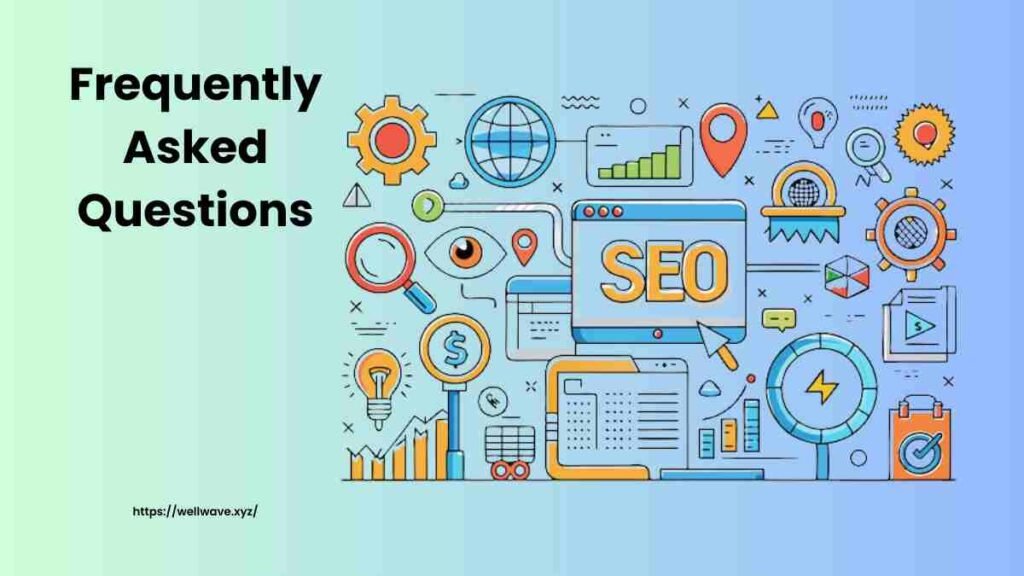
What is SEO? Search Engine Optimization in simple words?
SEO simply means optimizing your website for it to rank higher on the search engines, such as Google, without paying money on ads.
What’s the difference between SEM and SEO?
SEO means organic traffic through optimization while SEM uses paid advertising to show up in search results.
How much do I need to pay for free training of SEO?
Obviously, and these would be YouTube tutorials, blogging about free SEO, courses – pretty much everything.
Which SEO tools are suited best for beginners?
A new starter can easily begin working with Google Analytics, Yoast SEO, Ubersuggest.
In which time frame can results with SEO be expected?
This takes about 3 to 6 months before huge rankings and traffic improvement starts coming in.
Read More: Best B2B Ecommerce Websites


